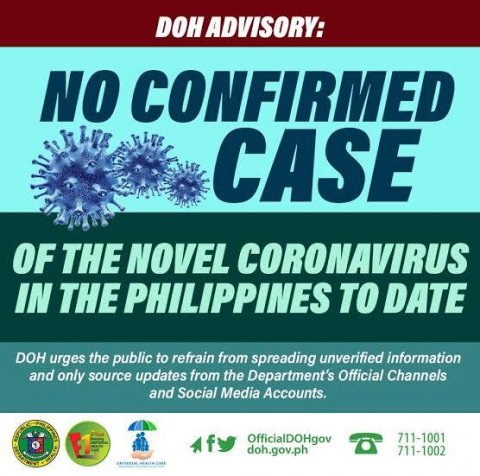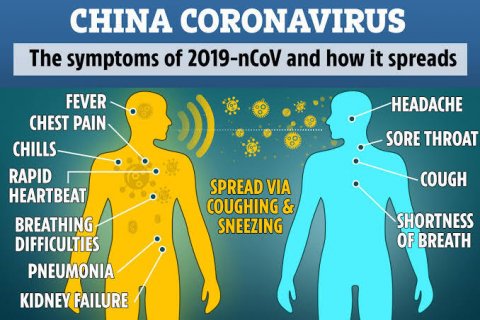Has coronavirus moved into the Philippines? How will I know if I or someone I know is already infected?
Here we will give you the latest updates on the status of 2019-nCoV (novel coronavirus) in the Philippines. You can also find a quick guide on how to recognise its symptoms, diagnosis, and course of treatment here.
Continue reading to learn more about coronavirus, the risks it poses and how you can protect yourself.
Coronavirus is Spreading
A new strain of coronavirus began to spread in Wuhan, China in December 2019. The virus has not been previously seen in humans. Out of the 41 Wuhan locals who tested positive for the virus, two died while seven fell severely ill as of January 17, 2020.
Recent reports state coronavirus infections reached 5,974 in China alone and 132 have already died due to the virus.
The 2019-nCov has spread to Asian countries like Thailand, Vietnam, Singapore, Japan, South Korea, Taiwan, and Nepal. It has also reached the United States, France, and most recently, Germany.
Coronavirus in the Philippines Update
Initially, DOH said there were 27 patients under investigation. It included 18 in Metro Manila, 1 in Mimaropa, 3 in Central Visayas, 1 in Eastern Visaya, 3 in Central Visayas, and 1 in Northern Mindanao. All of the patients had a history of recent travel to Wuhan, the city where the coronavirus outbreak originated.
However, the Provincial Health Office (PHO) of Aklan reported they tracked down and are observing another 11 Chinese nationals in Boracay for possible exposure to coronavirus. The 7 adults and 3 children are from the Hubei province in China which was also locked down due to the virus outbreak.
3 of the 35 tested negative for the coronavirus infection and were discharged, including a 5-year-old boy from Wuhan in Cebu City.
Has Anyone In The Philippines Been Infected By Coronavirus?
DOH currently waits for the test results from the Research Institute for Tropical Medicine in Muntinlupa City on samples from 13 patients. They are also waiting for confirmatory test results for 6 patients whose samples were sent to the Victorian Infectious Diseases Reference Laboratory in Australia.
The government has implemented safety measures to prevent the coronavirus from entering the country. Yesterday, the Philippines’ Bureau of Immigration temporarily suspended the issuance of visa upon arrival or VUA to Chinese nationals to ensure the Philippines would remain 2019 novel coronavirus-free. Airports also imposed stricter screenings for all passengers.
The Department of Health (DOH) assured the public that there is still NO confirmed cased of coronavirus in the Philippines.

Should I be tested for 2019-nCoV? Recognise CoronaVirus Symptoms
Recognising the Wuhan coronavirus symptoms is tricky as they are similar to symptoms of ordinary flu, pneumonia, and other respiratory illnesses. According to the Centers for Disease Control, patients who tested positive of the 2019-nCoV infection ranged from being mildly sick to being severely ill and dying.
2019-nCoV symptoms can include the following.
- Runny nose
- Sore throat
- Fever
- Cough
- Shortness of breath
In most cases, a person would know whether he or she has a coronavirus or a different cold-causing virus, such as rhinovirus.

CoronaVirus Diagnosis in the Philippines
A person infected by the virus may not initially show symptoms so diagnosis could be a bit difficult. CDC said, “symptoms of 2019-nCoV may appear in as few as 2 days or as long as 14 after exposure. This is based on what has been seen previously as the incubation period of MERS viruses.”
DOH explained the process of how they diagnose patients if they are infected with the new coronavirus:
- Local health officials run a fast track diagnostic test on throat swabs and blood samples from patients for 33 pathogens, including four types of coronaviruses
- If the results are negative, samples are run through a pancoronavirus test to determine if the patient is infected with a coronavirus.
- If the patient tests positive, they will now examine the samples for SARS (Severe Acute Respiratory Syndrome) or MERS (Middle East Respiratory Syndrome) coronavirus.
- If both tests are negative, the samples will be sent to the laboratory in Australia to see if they were infected with the 2019-nCov.
How to Treat Coronavirus
Health experts say there are no specific courses of treatments or medicine to treat coronaviruses in humans. Patients infected with common human coronavirus illness will recover on their own.
Do the following to relieve the symptoms of the Wuhan coronavirus and prevent it from getting worse.
- Take pain and fever medications (Caution: do not give Aspirin to children)
- Use a room humidifier or take a hot shower to help ease a sore throat and cough
- Drink plenty of liquids
- Stay home and rest
However, those who think they may have been exposed to the new coronavirus should go to the nearest healthcare provider immediately for testing and treatment.
